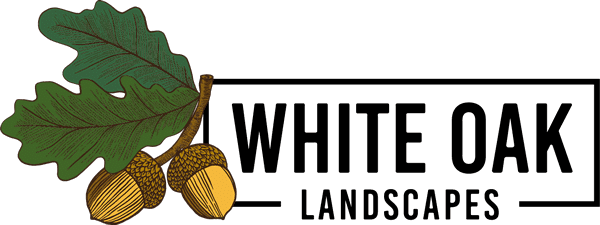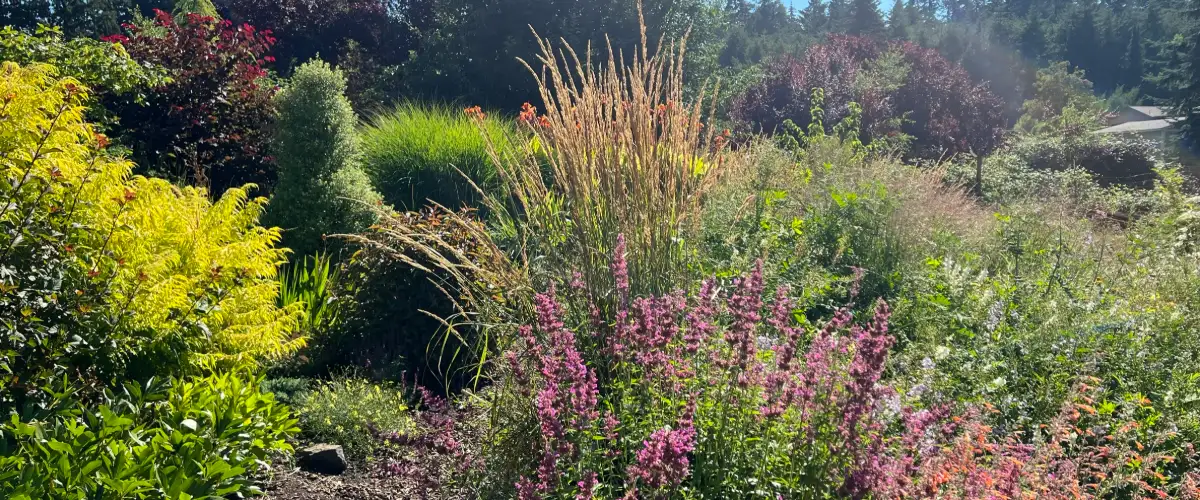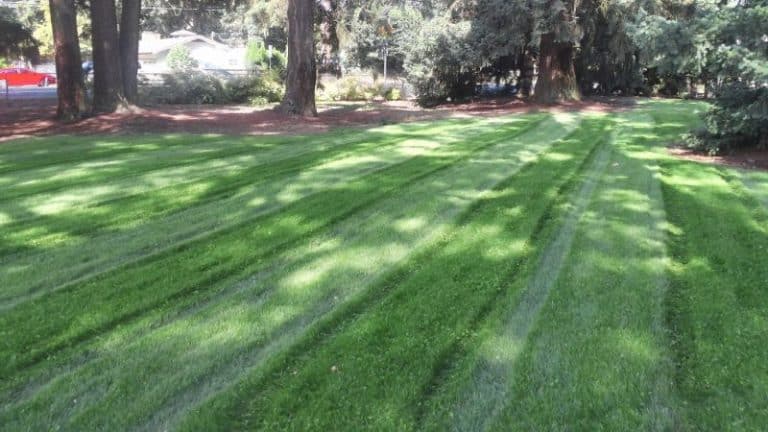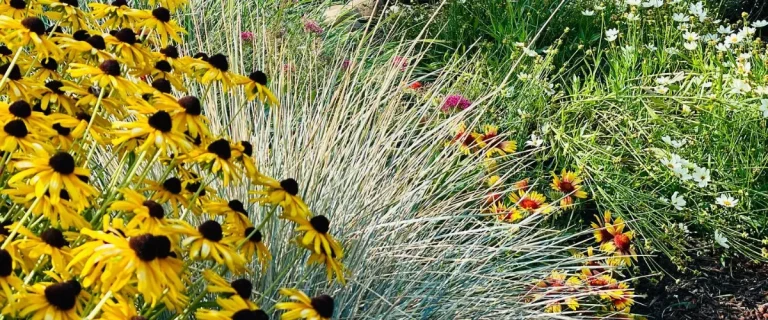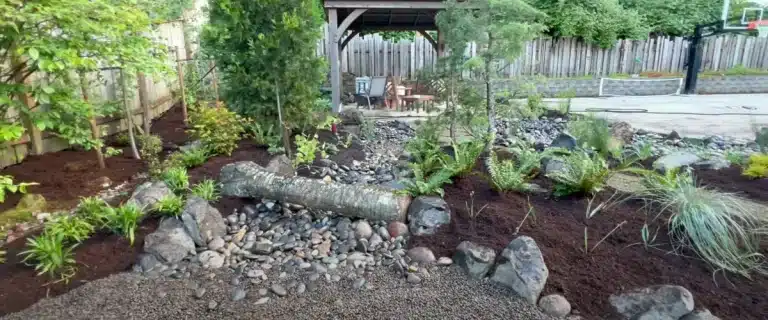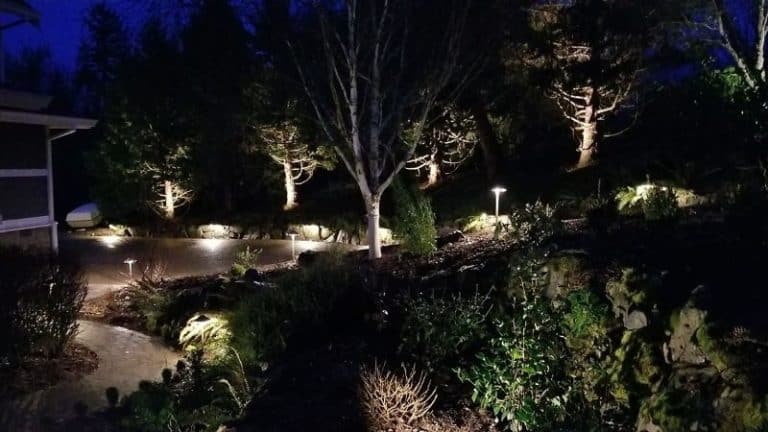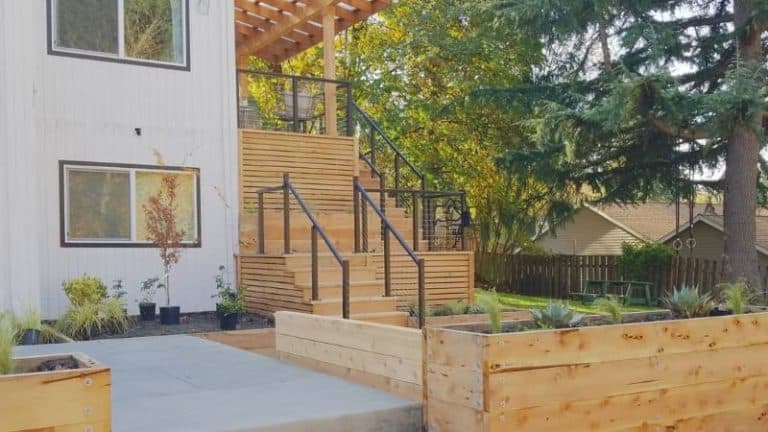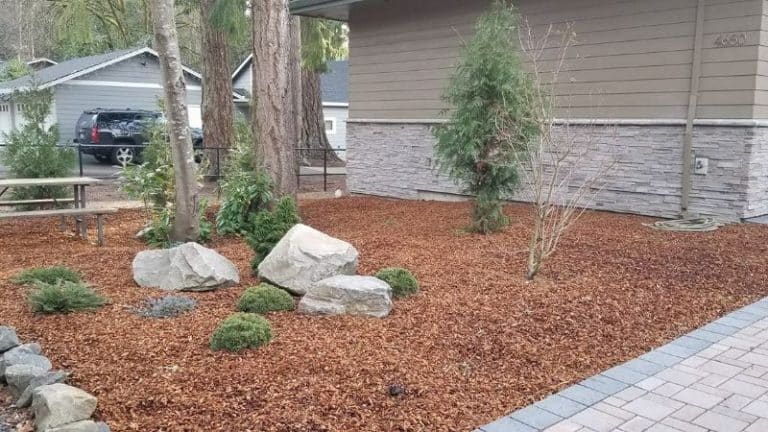Creating A Perennial Meadow In Your Oregon Backyard
Creating a perennial meadow in your Oregon backyard is a wonderful way to enhance natural beauty, support local wildlife, and enjoy a low-maintenance landscape. This guide will walk you through understanding perennial meadows, selecting suitable plants, attracting wildlife, and the steps involved in planning, preparing, and maintaining your meadow.
What Is a Perennial Meadow?
A perennial meadow is a dynamic plant community composed primarily of perennial grasses and wildflowers that return year after year. Unlike traditional lawns, these meadows offer a naturalistic aesthetic, providing continuous visual interest throughout the seasons. They play a crucial role in supporting biodiversity by offering habitat and food sources for various wildlife species native to our area.
Benefits of Perennial Meadows
Perennial meadows offer numerous advantages that enhance both the environment and the homeowner's experience. Let's go a little bit deeper into these benefits:
Biodiversity Enhancement
Perennial meadows support a wide range of plant and animal species, promoting ecological balance. The diverse plant life provides habitat and food sources for various wildlife, including pollinators like bees and butterflies, as well as birds and small mammals. This biodiversity contributes to a healthier and more resilient ecosystem.
Low Maintenance
Once established, meadows require minimal upkeep compared to traditional lawns, reducing the need for mowing, watering, and fertilization. This low-maintenance approach not only saves time and effort but also conserves water and reduces the use of fertilizers and pesticides, leading to a more sustainable landscape.
Meadows Add Natural Beauty
The diverse selection of flowers and grasses provides a changing tapestry of colors and textures throughout the year. This dynamic visual interest enhances the beauty of your Oregon property, offering a natural and serene setting that evolves with the seasons. The presence of wildflowers and native grasses creates a picturesque landscape that can be both relaxing and inspiring.
By embracing perennial meadows, homeowners can enjoy these multifaceted benefits, creating a harmonious balance between human habitation and the natural world.
Selecting Plants for Your Oregon Meadow
Selecting appropriate native plants is crucial for establishing a thriving perennial meadow in your Oregon backyard. Native species are well-adapted to local conditions and provide essential resources for local wildlife. Here are some additional native perennials to consider:
Native Perennials for Oregon Meadows
Common Camas (Camassia quamash): Known for its striking blue-violet flowers, Common Camas thrives in moist meadows that dry out in summer. It is an excellent choice for adding early-season color and is historically significant in the Pacific Northwest.
Narrowleaf Milkweed (Asclepias fascicularis): This perennial features clusters of pale pink to white flowers and is a vital host plant for monarch butterflies. It prefers dry to moist soils and full sun, making it suitable for various meadow conditions.
Showy Milkweed (Asclepias speciosa): With its large, fragrant pink flowers, Showy Milkweed attracts a variety of pollinators, including bees and butterflies. It grows well in fields, roadsides, and near streams, preferring full sun and well-drained soils.
Oregon Iris (Iris tenax): This perennial produces delicate purple flowers and thrives in well-drained soils with full to partial sun. It adds a graceful touch to meadows and supports local pollinators.
Large-Leaved Lupine (Lupinus polyphyllus): Featuring tall spikes of blue flowers, this lupine species enriches the soil with nitrogen and provides nectar for bees and butterflies. It prefers moist, well-drained soils and full sun.
Western Meadow Aster (Symphyotrichum campestre): This aster displays violet ray florets around a yellow center, blooming in late summer to fall. It thrives in dry, rocky soils and full sun, offering late-season resources for pollinators.
Bigelow's Sneezeweed (Helenium bigelovii): Known for its bright yellow flowers, this perennial thrives in moist areas such as meadows and stream sides. It adds vibrant color to the meadow and attracts various pollinators.
Meadow Checkermallow (Sidalcea campestris): This plant produces numerous pink flowers and is native to the Willamette Valley. It thrives in grassy meadows and provides nectar and pollen for native bees and butterflies.
Incorporating a diverse selection of these native perennials will enhance the ecological value and aesthetic appeal of your meadow, creating a sustainable habitat that supports a wide range of wildlife.
Native Grasses For Your Oregon Meadow
Incorporating native grasses into your Oregon meadow adds structure, movement, and year-round visual interest. These grasses not only enhance the aesthetic appeal but also provide essential habitats for wildlife and contribute to the ecological health of the meadow.
Benefits of Native Grasses
-
- Structural Diversity: Native grasses offer varying heights and forms, creating a layered effect that adds depth and complexity to your meadow.
- Wildlife Habitat: Grasses provide shelter and nesting sites for insects, birds, and small mammals, supporting biodiversity.
- Erosion Control: The deep root systems of native grasses help stabilize soil, reducing erosion and improving soil health.
Recommended Native Grasses for Oregon Meadows
Roemer's Fescue (Festuca roemeri): A fine-textured bunchgrass native to the Willamette Valley, Roemer's Fescue thrives in well-drained soils and full sun. Its blue-green foliage and clumping growth habit make it an excellent choice for meadow plantings.
California Oatgrass (Danthonia californica): This perennial bunchgrass is well-suited to Oregon's climate, preferring moist to dry soils and full sun to partial shade. Its tufted appearance and graceful seed heads add a delicate touch to meadows.
Prairie Junegrass (Koeleria macrantha): A fine-leaved, tufted bunchgrass with bluish-green foliage and silvery flower and seed heads. It adds a soft texture and visual interest to meadow plantings.
Blue Wildrye (Elymus glaucus): A robust bunchgrass with bluish foliage and tall flowering stems, Blue Wildrye adapts to a variety of soil conditions and provides vertical interest in meadows.
Tufted Hairgrass (Deschampsia cespitosa): Thriving in moist areas, this grass forms dense clumps with airy, delicate flower heads that create a shimmering effect, especially when backlit by the sun.
Incorporating Grasses into Your Meadow Design
-
- Planting Arrangement: Distribute grasses throughout the meadow to create a naturalistic look, interspersing them with wildflowers to mimic native plant communities.
- Maintenance Considerations: Once established, native grasses require minimal maintenance. Periodic mowing or cutting back in late winter or early spring can help rejuvenate growth and maintain the meadow's appearance.
By thoughtfully incorporating these native grasses, you can create a resilient and vibrant meadow that reflects Oregon's natural beauty and supports local ecosystems.
Attracting Wildlife to Your Meadow
A thoughtfully designed perennial meadow in Oregon can attract a diverse array of native wildlife, offering a sanctuary for various species and enriching your outdoor experience.
Specific Oregon Species Attracted to Perennial Meadows
Birds: Species such as the Western Meadowlark, Oregon's state bird, are drawn to open meadow habitats. Additionally, sparrows, finches, and swallows may frequent meadows in search of seeds and insects.
Butterflies: Butterflies like the Oregon Swallowtail and various fritillary species are attracted to meadows abundant in native wildflowers. Planting species such as Douglas Aster and Meadow Checkermallow can provide nectar sources for these butterflies.
Bees and Other Pollinators: Native bees, including bumblebees and mason bees, are vital pollinators that thrive in meadows rich in diverse flowering plants. Flowers like Common Yarrow and Oregon Sunshine are particularly attractive to these pollinators.
Design Elements to Support Wildlife
-
- Diverse Plantings: Incorporate a variety of flower shapes, colors, and bloom times to cater to different pollinator species. This diversity ensures that various wildlife can find suitable food sources throughout the growing season.
- Continuous Bloom: Plan for a succession of flowering throughout the growing season to provide consistent nectar sources. Including early, mid, and late-season bloomers ensures that pollinators have access to food from spring through fall.
- Shelter and Nesting Sites: Leave some areas undisturbed or incorporate features like brush piles to offer shelter for wildlife. Tall grasses and dense plantings can provide nesting sites for birds and cover for small mammals.
Additional Features
-
- Water Sources: Install a shallow water feature or birdbath to provide drinking and bathing opportunities for birds and insects. Ensure that the water is clean and refreshed regularly to attract wildlife.
- Host Plants: Include plants that serve as larval hosts for butterfly caterpillars. For example, planting milkweed species supports Monarch butterflies, while lupines can host various blue butterfly species.
By incorporating these design elements and plant selections, your perennial meadow can become a vibrant habitat that supports and attracts a wide range of Oregon's native wildlife, providing endless opportunities for nature observation and enjoyment.
Planning Your Meadow
Thoughtful planning is the cornerstone of a successful perennial meadow, ensuring it thrives and harmoniously integrates with your landscape. At White Oak Landscapes, we excel in designing and implementing these naturalistic spaces, a project we are deeply passionate about and where our expertise truly shines.
Assessing Your Space
-
- Size Considerations: Whether you're working with a compact urban plot or a sprawling rural expanse, meadows can be tailored to fit. Even small areas can be transformed into vibrant mini-meadows, while larger spaces offer opportunities for greater plant diversity and ecological complexity.
- Sunlight and Soil: Most meadow plants flourish in full sun and well-drained soils. Conducting a soil test to determine pH and fertility levels is essential for selecting appropriate plant species and planning necessary soil amendments.
Perennial Meadow Design Tips
-
- Plant Groupings: Arranging plants in clusters mimics natural ecosystems and enhances visual impact. This approach creates a cohesive look and supports plant health by fostering beneficial microenvironments.
- Pathways: Incorporating mowed paths or stepping stones provides access for maintenance and allows you to immerse yourself in the meadow's beauty. These pathways invite exploration and make the space more inviting.
By meticulously assessing your space and thoughtfully designing plant groupings and pathways, you can create a perennial meadow that is both ecologically beneficial and aesthetically pleasing.
Our team at White Oak Landscapes is dedicated to bringing these natural landscapes to life, reflecting our background in horticulture, our commitment to excellence, and our passion for nature-inspired design.
Preparing the Site For Your New Meadow
Proper site preparation is crucial for the successful establishment of a perennial meadow, as it sets the stage for healthy plant growth and long-term sustainability. At White Oak Landscapes, we are passionate about meticulously planning and executing these preparatory steps, ensuring that each meadow we create thrives and reflects our expertise.
Removing Existing Vegetation
Proper site preparation requires the effective removal of existing vegetation to create a clean slate for a thriving meadow. At White Oak Landscapes, we take a practical and efficient approach, using professional-grade equipment to clear unwanted growth quickly and effectively.
- Mechanical Clearing (Brush Hogging) – For large areas overgrown with grasses, weeds, or shrubs, we use a brush hog to cut down vegetation efficiently. This method is ideal for quickly reclaiming space and preparing it for further soil work.
- Skid Steer Removal – When dealing with thicker brush, invasive species, or compacted areas, a skid steer equipped with a forestry mulcher or land-clearing attachment can efficiently remove unwanted plants and small saplings, making the site ready for meadow installation.
- Mini Excavator Clearing – For sites with deeply rooted vegetation, uneven terrain, or areas requiring precise clearing, we use mini excavators to uproot stubborn plants and grade the soil as needed. This ensures a smooth and prepared surface without excessive soil disruption.
By using these professional land-clearing methods, we streamline the preparation process while ensuring the site is ready for planting as quickly and efficiently as possible. Our goal is to create a properly prepared, nutrient-rich foundation that sets your meadow up for long-term success.
Soil Preparation
Once the existing vegetation is removed, preparing the soil creates an optimal environment for seed germination and root development:
-
- Tilling: Lightly tilling the soil helps to loosen it, creating a suitable seedbed. However, excessive tilling can bring dormant weed seeds to the surface, so it's important to balance soil aeration with weed management considerations.
- Weed Control: Addressing persistent weeds before planting is vital to reduce competition for nutrients, water, and light. This may involve manual removal, additional smothering, or targeted herbicide application, depending on the weed species present.
By investing time and effort into thorough site preparation, you lay a strong foundation for your perennial meadow. Our team at White Oak Landscapes is dedicated to executing these steps with precision and care, reflecting our passion and expertise in creating thriving, sustainable landscapes.
Planting Your Perennial Meadow
Establishing a perennial meadow is a rewarding endeavor that requires patience and time. It's important to understand that a meadow doesn't reach its full potential immediately; instead, it matures and becomes more beautiful over several years.
Understanding the Meadow Establishment Timeline
-
- Year 1: Establishment Phase: In the first year after planting, the focus is on site preparation and initial growth. Many perennial species concentrate on root development during this period, resulting in limited above-ground growth. It's common to see minimal flowering as plants establish themselves.
- Years 2-3: Growth and Early Blooming: During the second and third years, perennials begin to exhibit more noticeable growth and start flowering. While some species may bloom, the meadow is still in its developmental stages, and the full diversity of plants may not yet be evident.
- Years 4 and Beyond: Maturation and Full Display: By the fourth year and onward, the meadow reaches maturity. A diverse array of wildflowers and grasses flourish, providing a vibrant and dynamic landscape. The ecological benefits, such as attracting pollinators and supporting wildlife, become more pronounced as the meadow establishes its natural balance.
The Importance of Patience in Meadow Development
Patience is essential when cultivating a perennial meadow. The gradual establishment allows plants to develop strong root systems, which contribute to their resilience and longevity. Over time, the meadow's aesthetic appeal enhances, offering a rich tapestry of colors and textures that change with the seasons.
Our Commitment to Meadow Projects
At White Oak Landscapes, we are passionate about designing and establishing perennial meadows. Our expertise ensures that each project is meticulously planned and executed, taking into account the unique characteristics of your landscape. We understand the importance of patience in this process and are dedicated to guiding you through each phase, from initial planting to the meadow's full maturation.
By embracing the natural progression of meadow development, you can look forward to a sustainable and beautiful addition to your Oregon backyard that will provide ecological benefits and aesthetic enjoyment for years to come.
Maintaining Your Meadow
While low-maintenance, meadows benefit from periodic care.
First-Year Care
- Weed Management: Regularly remove invasive weeds to reduce competition.
- Watering: Provide supplemental water during dry spells to help young plants establish.
Ongoing Maintenance
- Mowing: An annual mow in late fall or early spring helps control woody plants and promotes healthy growth.
- Monitoring: Observe plant health and diversity, making adjustments as needed to maintain balance.
Embracing the Meadow Aesthetic
Perennial meadows offer a dynamic, ever-changing landscape that contrasts with the predictability of traditional manicured gardens. Instead of uniform rows and meticulously pruned shrubs, meadows present an organic, flowing environment where nature takes the lead. This naturalistic approach invites homeowners to appreciate the beauty in spontaneity, seasonal shifts, and the intricate relationships between plants and wildlife.
Accepting Imperfection
Unlike formal gardens, meadows are not rigidly controlled spaces. They thrive on biodiversity, allowing a wide range of plant species to co-exist and adapt over time. Some plants may dominate in certain years, while others fade and reappear in cycles. This natural evolution creates an ever-changing display of color, texture, and movement, ensuring that no two seasons look exactly the same. By embracing this fluidity, homeowners develop a deeper appreciation for nature’s rhythms and the self-sustaining beauty of a meadow.
Seasonal Changes
A well-designed meadow provides continuous visual interest throughout the year. In early spring, fresh green shoots emerge, followed by a succession of wildflowers blooming through summer. By fall, many plants go to seed, creating golden hues and soft, feathery textures that catch the light beautifully. During winter, seed heads and dormant grasses provide structure, offering a stark but captivating beauty while supporting overwintering wildlife. Each season brings new life, making the meadow a constantly evolving spectacle.
Integrating with Existing Landscapes
Transition Zones
While meadows are stunning on their own, they can also be thoughtfully blended with more structured landscapes. Using shrubs, small trees, or ornamental grasses along the edges of a meadow creates a smooth transition into traditional garden spaces. This blending technique helps the meadow feel intentional rather than wild or unkempt, allowing it to harmonize with the surrounding landscape.
For example, a border of Evergreen Huckleberry (Vaccinium ovatum) or Red Twig Dogwood (Cornus sericea) can create a gentle visual shift between the meadow and a formal garden. Similarly, clusters of Tufted Hairgrass (Deschampsia cespitosa) or Blue Wildrye (Elymus glaucus) can provide a soft, natural boundary.
Defined Edges
One of the most effective ways to keep a meadow looking purposeful rather than overgrown is by maintaining clear edges. Well-defined boundaries give the meadow structure and can be achieved through various design elements:
Mowed Paths: Cutting narrow, winding trails through the meadow allows for easy navigation and encourages interaction with the space. These paths also create a striking contrast between the neatly maintained edges and the wilder, flowing plant life.
Stone or Mulch Borders: Using decorative stones, wood chips, or even low-growing ground covers like Kinnikinnick (Arctostaphylos uva-ursi) along the meadow’s perimeter creates a tidy, intentional frame.
Low Fencing or Hedges: In more structured landscapes, a short fence or a hedge of Oregon Boxwood (Paxistima myrsinites) can provide a refined transition while still maintaining the meadow’s naturalistic charm.
A Living Landscape
A perennial meadow is more than just a planting style—it’s a philosophy of working with nature rather than against it. By embracing its organic nature, seasonal changes, and wildlife-friendly design, homeowners create an immersive, ever-evolving sanctuary. The beauty of a meadow lies not in its order but in its authenticity, making it a deeply rewarding and sustainable choice for any Oregon landscape.
